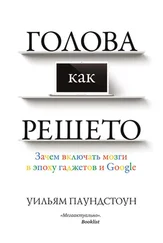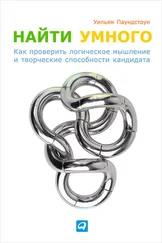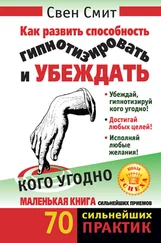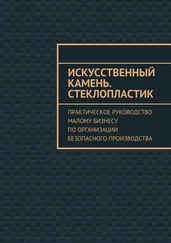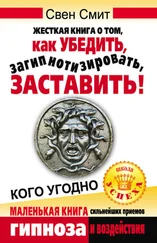Metrick, Andrew (1996). “March Madness? Strategic behavior in NCAA basketball tournament betting pools.” Journal of Economic Behavior & Organization 30, 159–172.
Miller, George A. (1956). “The Magical Number Seven, Plus or Minus Two: Some Limits on Our Capacity for Processing Information.” Psychological Review 63, 81–97.
Mlodinow, Leonard (2009). “The Triumph of the Random.” Wall Street Journal, Jul. 16, 2009.
Moody, Reginald F. (2010). “Taking Tips from Zenith’s Legendary Eugene McDonald, Jr.: Getting Public Relations and Advertising to Say ‘I Do.’ ”Public Relations Journal 4, 1–15.
Morrissey, Janet (2011). “Retiring Without a Home Loan.” New York Times, Nov. 10, 2011.
Neiman, Tal, and Yonatan Loewenstein (2011). “Reinforcement learning in professional basketball players.” Nature Communications 2:569, DOI: 10.1038/ncomms1580.
Nelson, Douglas L., Cathy L. McEvoy, and Thomas A. Schreiber (1998). “The University of South Florida word association, rhyme, and word fragment norms.” www.usf.edu/FreeAssociation.
Newcomb, Simon (1881). “Note on the frequency of use of the different digits in natural numbers.” American Journal of Mathematics 4, 39–40.
Newmark, Evan (2010). “Mean Street: Crash – The Machines Are in Control Now.” Wall Street Journal, May 6, 2010. blogs.wsj.com/deals/2010/05/06/mean–street-crash-the-machines-are-in-control-now/.
Niederhoffer, Victor, and M.F.M. Osborne (1966). “Market Making and Reversals on the Stock Exchange.” Journal of the American Statistical Association 61, 897–916.
Niemi, Jarad B., Bradley P. Carlin, and Jonathan M. Alexander (2008). “Contrarian Strategies for NCAA Tournament Pools: A Cure for March Madness?” Chance 21, 39–46.
Nigrini, Mark J. (1993). “Can Benford’s Law Be Used in Forensic Accounting?” Balance Sheet, Jun. 1993, 7–8.
Nigrini, Mark J. (1996). “A Taxpayer Compliance Application of Benford’s Law.” Journal of the American Taxation Association 18, 72–91.
Nigrini, Mark J. (2005). “An Assessment of the Change in the Incidence of Earnings Management Around the Enron–Andersen Episode.” Review of Accounting and Finance 4, 92–110.
Nigrini, Mark J. (2012). Benford’s Law: Applications for Forensic Accounting, Auditing, and Fraud Detection. New York: Wiley.
Nocera, Joseph (2005). “$100 Billion in the Hands of a Computer.” New York Times, Nov. 20, 2005.
Nocera, Joe (2012). “My Faith–Based Retirement.” New York Times, Apr. 27, 2012.
Palmer, Brian (2012). “Your Pet’s Name vs. Where You Met Your Spouse.” Slate, Jun. 7, 2012. www.slate.com/articles/news_and_politics/explainer/2012/06/mitt_romney_email_hack_which_
password_recovery_questions_are_most_secure_.html.
Pätäri, Eero J. (2009). “Do Hot Hands Warm the Mutual Fund Investor? The Myth of Performance Persistence Phenomenon.” International Research Journal of Finance and Economics 34, 117–139.
Patterson, Scott (2010). The Quants. New York: Crown Business.
Paul, Rodney J., Andrew P. Weinbach, and Brad Humphreys (2011). “The Belief in the ‘Hot Hand’ in the NFL: Evidence from Betting Volume Data.” University of Alberta Working Paper 2011–16.
Perlroth, Nichole (2012). “How to Devise Passwords That Drive Hackers Away.” New York Times, Nov. 7, 2012.
Pinker, Steven (2011). The Better Angels of Our Nature: Why Violence Has Declined. New York: Viking.
Pinkham, Roger S. (1961). “On the Distribution of First Significant Digits.” Annals of Mathematical Statistics 32, 1223–1230.
Poe, Edgar Allan (1845). “The Purloined Letter.” xroads.virginia.edu/~hyper/poe/purloine.html.
Poole, Kate (2011). “Analytics Industry Expected to Grow, Advance in 2011.” EContent, Jan./Feb. 2011. www.econtentmag.com/Articles/News/News-Feature/Analytics-Industry-Expected-to-Grow-Advance-in-2011–73911.htm.
Poundstone, William (2005). Fortune’s Formula: The Untold Story of the Scientific Betting System that Beat the Casinos and Wall Street. New York: Hill and Wang.
Poundstone, William (2010). Priceless: The Myth of Fair Value (and How to Take Advantage of It). New York: Hill and Wang.
Ramos, Sophia (2009). “The Size and Structure of the World Mutual Fund Industry.” European Financial Management 15, 145–180.
Rampell, Catherine (2008). “Madoff: As Consistent a Golfer as He Was an Investor.” New York Times, Dec. 19, 2008.
Rath, Gustave J. (1966). “Randomization by Humans.” American Journal of Psychology 79, 97–103.
Reichenbach, Hans (1949). The Theory of Probability. Berkeley: University of California Press.
Richards, Carl (2010). “Investors Are Still Behaving Badly.” New York Times, Aug. 5, 2010.
Ross, Bruce M. (1955). “Randomization of a Binary Series.” American Journal of Psychology 68, 136–138.
Roxburgh, Charles, Susan Lund, and John Piotrowski (2011). “Mapping global capital markets 2011.” McKinsey & Company, www.cfr.org/economics/mckinsey-global-institute-mapping-global-capital-markets-2011/p25592.
Salsman, Richard M. (2004). “The Cause and Consequences of the Great Depression, Part 1: What Made the Roaring ’20s Roar.” Intellectual Activist, Jun. 2004.
Scherzer, Lisa (2012). “Cracking Your PIN Code: Easy as 1–2–3–4.” Yahoo! Finance, Sept. 21, 2012. finance.yahoo.com/blogs/the-exchange/cracking-pin-code-easy-1-2-3-4-130143629.html.
Schiffman, Nathaniel (2005). Abracadabra! Amherst, NY: Prometheus Books.
Schroeder, Manfred (1992). Fractals, Chaos, Power Laws: Minutes from an Infinite Paradise. New York: W. H. Freeman.
Shannon, C.E. (1948). “A Mathematical Theory of Communication.” Bell System Technical Journal, Jul. and Oct. 1948, 379–423; 623–656.
Shannon, Claude (1953). “A Mind-Reading Machine.” Bell Laboratories memorandum, Mar. 18, 1953.
Poundstone, William (1955). “ Game–Playing Machines.” Journal of the Franklin Institute 250, 447–453.
Sharpe, Steven (2002). “Re-examining Stock Valuation and Inflation: The Implication of Analysts’ Earning Forecasts.” Review of Economics and Statistics 84, 632–48.
Sherden, William A. (1998). The Fortune Sellers: The Big Business of Buying and Selling Predictions. New York: John Wiley.
Shiller, Robert J. (1996). “ Price–Earnings Ratios as Forecasters of Returns: The Stock Market Outlook in 1996.” www.econ.yale.edu/~shiller/data/peratio.html.
Shiller, Robert J. (2005). Irrational Exuberance (second edition). New York: Broadway Books.
Siegler, M. G. (2009). “One of the 32 Million With a RockYou Account? You May Want to Change All Your Passwords. Like Now.” Techcrunch.com, Dec. 14, 2009. techcrunch.com/2009/12/14/rockyou-hacked/.
Singer, Natasha (2012). “Secret E-Scores Chart Consumers’ Buying Power.” New York Times, Aug. 19, 2012.
Sobyanin, Alexandar and V. Suchovolsky (1993). “Elections and the Referendum December 11, 1993, in Russia.” Report to the Administration of the President of the RF, Moscow.
Spencer-Brown, G. (1957). Probability and Scientific Inference. London: Longmans, Green.
Stein, Ben, and Phil DeMuth (2003). Yes, You Can Time the Market! New York: John Wiley.
Stein, Mark A. (1993). “ ‘Evil Twin’ Helps Even the Odds in Office Betting Pools.” Los Angeles Times, Apr. 17, 1993.
Steinert-Threlkeld, Tom (2013). “High-Frequency Trading Less Profitable, Less Prevalent.” TradersMagazine.com, Mar. 1, 2013. www.tradersmagazine.com/news/high-frequency-trading-less-profitable-prevalent-110953-1.html.
Tanaka, Sanette (2013). “The Best Day to List a Home Is…” Wall Street Journal, Feb. 8, 2013.
Tetlock, Philip. Expert Political Judgment: How Good Is It? How Can We Know? Princeton: Princeton University Press, 2005.
Читать дальше
Конец ознакомительного отрывка
Купить книгу


